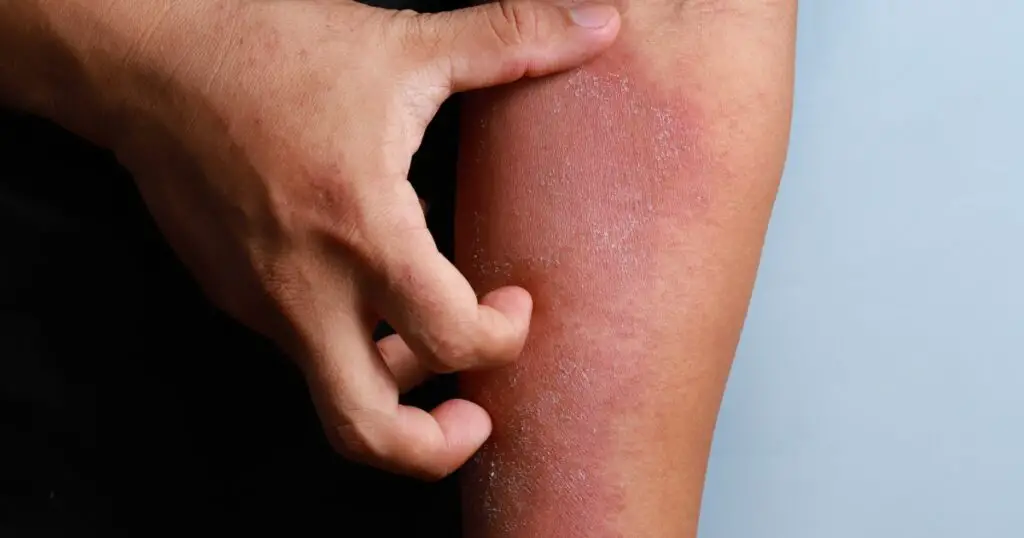Seborrheic dermatitis and eczema are two conditions that often cause confusion due to their similar symptoms, which include inflammation, itching, and flaking of the skin. However, they are distinct disorders with different triggers and treatment approaches.
Seb derm primarily affects areas of your body with a high density of oil-producing glands. You might notice flaky, oily patches of skin on your scalp, face, neck or chest. This skin condition is generally linked to an overproduction of sebum and a reaction to Malassezia, a common yeast that naturally lives on the skin.
On the other hand, eczema, or atopic dermatitis, typically presents as dry, inflamed, itchy patches of skin, and is often associated with an overactive immune response to various environmental triggers.
Recognizing which of these skin conditions you’re dealing with is the first step toward relief. While symptoms may overlap, the location and nature of the skin changes, the associated triggers, and the effectiveness of various treatments can help distinguish between the two.
Let’s take a deep dive:
Causes
Seborrheic Dermatitis
- The exact cause is unknown, but Seb Derm is associated with a reaction to Malassezia byproducts, a yeast that’s naturally found on your skin.
- It’s also asssociated with oily skin and is often triggered by activities or conditions that increase sebum production
- Seb Derm can be associated with a lower immune system e.g people with HIV, Parkinsons, depression or have severe chronic stress.
Read more about why Seb Derm occurs.
Eczema
- Frequently linked to an overactive immune system that responds inappropriately to triggers.
- Can be a reaction to environmental irritants like soaps, detergents and synthetic fibers that can irritate the skin and lead to flare ups.
- Eczema can also be triggered by foods, dust mites or pollen.
- Similiar to Seb Derm, stress, hormonal changes, impaired skin barrier and skin microbiome imbalance can contribute to the severity of flare ups
Distinguishing features
Though both skin conditions cause irritation and inflammation, they have distinct features that will help you identify if you have Seb Derm or eczema.
Seborrheic dermatitis

- Often presents with oily, flaky patches, predominantly on your scalp, but it can also affect your face, ears, neck and chest. The skin may appear yellowish and may have a greasy scale.
- Known as dandruff when it affects the scalp in adults and as cradle cap in infants, it’s generally not as itchy as eczema.
Eczema

- Characterized by itchy, red, and dry skin, especially on the folds of your elbows, behind the knees, and on the face in infants.
- Can develop into thick, leathery areas over time due to chronic scratching. The skin may also develop small, fluid-filled bumps.
You should also consider if you have other skin conditions like psoriasis or rosacea as they may also cause similiar symptoms.
Let’s take a deeper look into some common signs and symptoms:
Medical Diagnosis
Clinicians generally perform a clinical diagnosis based on a physical examination of your skin. If they are not certain of what condition you have, a skin biopsy may be done to rule out other conditions. Here are typical diagnostic steps:
- Visual Examination: Assessing the affected area for characteristic skin changes.
- Medical History: Discussing symptom onset, duration, and any related factors.
- Skin Biopsy (if needed): Removing a small skin sample to examine under a microscope.
Most doctors and dermatologists are able to make a diagnosis based on a physical exam and medical history alone.
Treatment and Management
Eczema and Seb Derm have distinct treatment approaches. That’s why it’s important to at least try to diagnose your rash.
Seborrheic dermatitis

- An anti-fungal cream like ketoconazole, Clotrimazole or miconazole is the mainstay of treatment
- Anti-dandruff shampoos for scalp Seb Derm or dandruff
- Avoid products that can increase skin oils and feed Malassezia (read about oils to avoid)
- In severe cases, steroid creams to reduce the inflammation
Read my ultimate guide to Seb Derm treatment for more info.
Eczema
- Hydrocortisone and other corticosteroids to control inflammation and reduce itching.
- Moisturizers to keep the skin hydrated and repair the skin barrier.
- Avoid triggers that can exacerbate the rash
- Calm down your immune system so it’s not so over-reactive.
I’m not an expert on eczema so you’ll need to do more research if you think you have eczema.
Steroid creams are effective in both Seb Derm and eczema (and most other rashes out there) because it suppresses local inflammation. This doesn’t mean it’s good treatment. Steroid creams are only a bandaid and doesn’t treat the underlying cause. Other than putting yourself at risk of steroid side effects, the moment you stop using the cream, your rash can rebound quickly.
I don’t recommend steroid creams for Seb Derm and this is why.
What to do if you’re still not sure
You (or your doctor) may have gone through the process of trying to diagnose this dratted rash you have and still can’t pinpoint exactly which one it is. What do you do then?
The simplest way you can differentiate between Seb Derm and eczema is to apply an over-the-counter anti-fungal cream like clotrimazole twice a day. If it’s Seb Derm, your rash will start to improve within days. If it’s eczema or some other skin condition, your rash will remain the same.
Voila, you have your answer.
Pingback: Red, Itchy Beard? Banish Beard Dandruff Forever